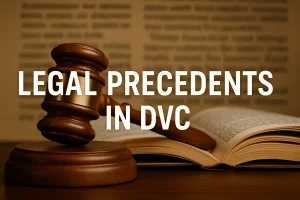If your vehicle lost value after an accident—even after repairs—and your insurance company won’t pay up, you might feel stuck. But there’s a legal path many overlook: small claims court. This article explains when and how to take your diminished value (DV) claim to court yourself. By the end, you’ll understand who qualifies, what to prepare, and how to present a winning case without needing an expensive lawyer.
When and Why to Consider Small Claims Court
Diminished value is the loss in market worth your car suffers after an accident, even if it’s repaired well. Most buyers won’t pay the same for a car with an accident history, and insurance companies often try to downplay that.
If your claim is denied or lowballed, and you’ve exhausted normal negotiation routes, small claims court gives you the power to fight back—without major legal fees. It’s ideal for straightforward cases under a certain dollar limit, which varies by state (usually $5,000 to $10,000).
Are You Eligible to File in Small Claims Court?
Before you file, make sure your case meets the basic requirements:
- Claim amount: Check your state’s cap. For example, California allows up to $10,000 for individuals, while Texas caps it at $20,000.
- Type of claim: Small claims typically work for third-party DV claims (against the at-fault driver’s insurer). First-party claims may be harder unless your policy explicitly covers DV.
- You’re willing to represent yourself: Small claims is designed for non-lawyers. You present your case directly to a judge.
If your loss is too high or the situation is complex (multiple accidents, high-end vehicle, etc.), you may need to consult an attorney instead.
Preparing a Strong Case for Court

The judge won’t just take your word for it. You’ll need to prove:
- Your car was in an accident.
- It was repaired.
- Despite repairs, the vehicle is now worth less than before.
Bring with you:
- Photos of the damage before and after repairs
- Repair receipts and estimates
- A professional diminished value appraisal
- Comparable vehicle listings to support pre-accident value
- Vehicle history reports showing the recorded accident
Having a certified appraiser’s report carries more weight than a generic estimate.
Step-by-Step: Filing Your Small Claims Case
Filing is easier than you might think:
- Go to your local small claims court website or office.
- Fill out a claim form with the details of your case, the amount sought, and who you’re suing (typically the insurance company or at-fault driver).
- Pay the filing fee (usually $25–$75).
- Serve the defendant a copy of the claim—often done via certified mail or a process server.
Once a court date is set, you’ll appear before a judge for a short hearing—usually 15–30 minutes.
Tips for Presenting Your Case Effectively

When it’s your turn, be organized and direct. Judges appreciate clarity.
- Stick to the facts. Show how much your car was worth before and how much it’s worth now.
- Reference your evidence. Point to your appraisal and vehicle listings.
- Be respectful and calm. You’re not there to rant—just to prove your loss.
If the insurance company sends a representative, don’t be intimidated. Just focus on the evidence and what’s fair.
What Happens After the Verdict
If the judge rules in your favor, the defendant must pay the amount ordered—often within 30 days. If they don’t, you can take steps to enforce the judgment, like wage garnishment or a lien.
If you lose, you may still appeal, depending on your state’s rules. But most cases are resolved at this first level.
Final Thoughts: Small Claims Court Is Empowering
You don’t need to accept a lowball offer or a flat denial. If you have the right documentation and a reasonable claim, small claims court is a powerful tool that puts control back in your hands.
It’s fast, affordable, and designed for people just like you—vehicle owners who want what’s fair after an accident.



